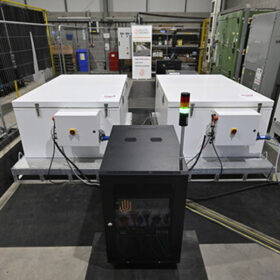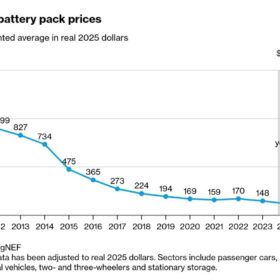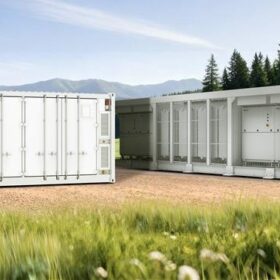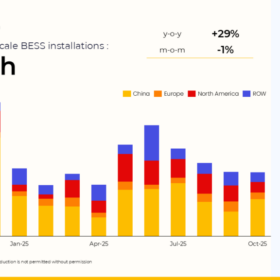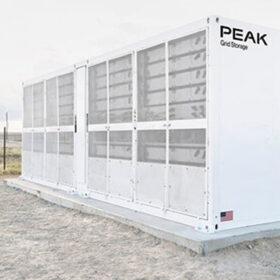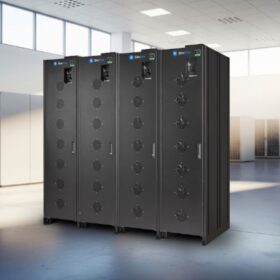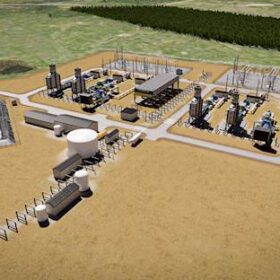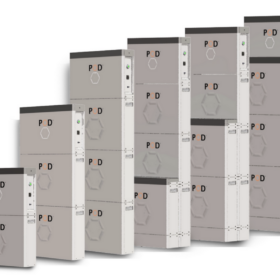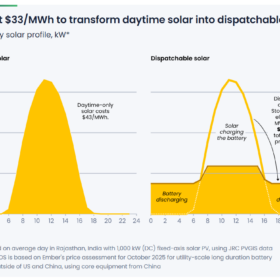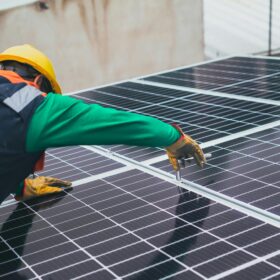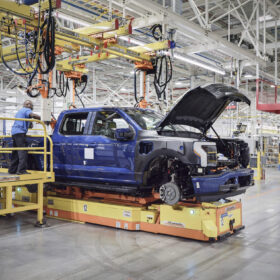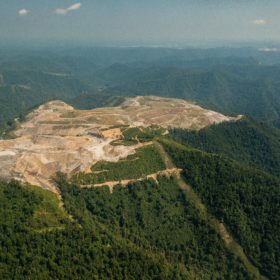Inlyte proves out first full-scale iron–sodium battery system in factory test
According to Inlyte, the tested unit incorporates what it describes as the world’s largest sodium metal chloride battery cells and modules built to date, with each module capable of storing more than 300 kWh of energy.
Global lithium-ion battery pack prices fall to $108/kWh, says BNEF
Battery pack prices for stationary storage fell to $70/kWh in 2025, a 45% drop from 2024, making it the cheapest lithium-ion category for the first time, according to BloombergNEF (BNEF).
Trina Storage launches AC-coupled battery for utility-scale applications
Offered primarily as a 10 MW unit, the new product is also available in a 5.5 MW version for customers with specific requirements.
Global grid-scale BESS deployment up by 38% year-on-year through October
Global grid-scale battery energy storage system (BESS) deployments have hit 156 GWh year-to-date. Over 153 GWh are still slated for commissioning in 2025, though delays and cancellations are likely to trim that total by year-end.
United States recall targets 25,000 EcoFlow Delta Max 2000 units
The U.S. Consumer Product Safety Commission (CPSC) says EcoFlow is recalling about 25,030 Delta Max 2000 power stations after six reported fires caused more than USD 850,000 in property damage.
Peak Energy to supply up to 4.75 GWh of sodium-ion batteries to Jupiter Power
In a major milestone for the two-year-old Series A startup and the broader stationary energy storage sector, US-based Peak Energy has signed a supply agreement potentially worth more than $500 million.
ZincFive unveils BC 2 AI battery system for both AI and traditional IT loads
The new nickel-zinc (NiZn) battery cabinet provides support for high-intensity AI pulses while also offering traditional IT backup within a compact footprint.
Canada’s Cache Power advances 30 GWh compressed air storage project
Cache Power has commissioned an engineering study for a 640 MW compressed air energy storage and hydrogen project in Alberta, supported by provincial funding.
Australia’s PowerCap enters U.S. with sodium-ion batteries
Australia’s PowerCap has entered the US market with its sodium-ion stationary storage systems and plans to build a manufacturing facility to serve customers across the Americas.
China imposes new export controls on lithium ion battery technology
The Chinese government has introduced new export controls on key dual-use items, citing national security concerns. The move opened a new chapter in the ongoing trade confrontations with the US.

